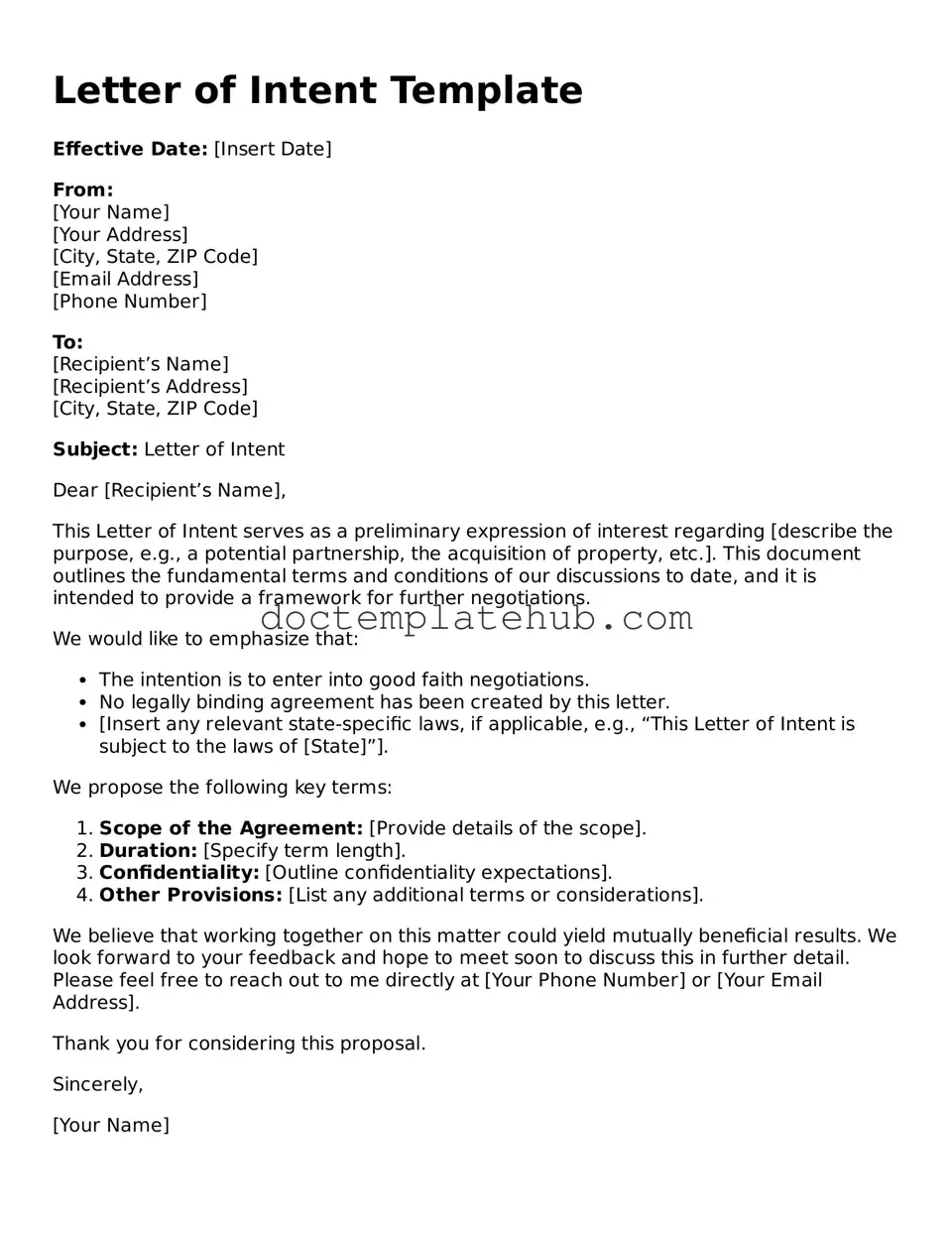What is a Letter of Intent?
A Letter of Intent (LOI) is a document that outlines the preliminary understanding between parties who intend to enter into a formal agreement. It serves as a starting point for negotiations and can detail the key terms and conditions that both parties are willing to discuss. While it is not legally binding, it demonstrates the intent to move forward with a specific transaction or partnership.
Why is a Letter of Intent important?
The LOI is important because it clarifies the intentions of both parties before committing to a formal contract. It helps to identify the main points of agreement and any areas that require further negotiation. By putting these elements in writing, both parties can avoid misunderstandings and ensure that they are on the same page as they move forward.
What should be included in a Letter of Intent?
Typically, an LOI should include the following elements: the names of the parties involved, a description of the proposed transaction or partnership, key terms such as pricing and timelines, confidentiality clauses, and any conditions that must be met before the final agreement is executed. Including these details can provide clarity and set expectations for both parties.
Is a Letter of Intent legally binding?
Generally, a Letter of Intent is not legally binding. However, certain sections, such as confidentiality agreements or exclusivity clauses, may be enforceable. It is essential for parties to clearly indicate which parts of the LOI are binding and which are not to avoid confusion later on.
How does a Letter of Intent differ from a contract?
A Letter of Intent is a preliminary document that outlines the intentions of the parties involved, while a contract is a formal, legally binding agreement that details the rights and obligations of the parties. The LOI serves as a roadmap for the eventual contract, but it does not carry the same legal weight.
When should I use a Letter of Intent?
An LOI is useful in various situations, such as mergers and acquisitions, joint ventures, real estate transactions, and business partnerships. It is particularly beneficial when both parties want to establish a mutual understanding before investing significant time and resources into negotiations.
Can a Letter of Intent be modified after it is signed?
Yes, a Letter of Intent can be modified after it is signed, provided that both parties agree to the changes. It is advisable to document any amendments in writing to ensure clarity and avoid future disputes. Open communication between parties will facilitate a smoother negotiation process.
